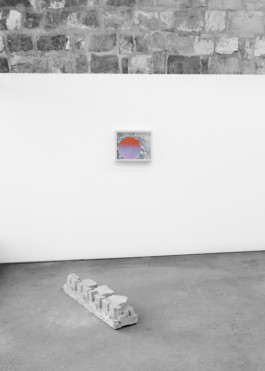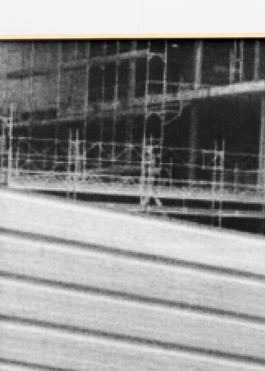


















Curated in collaboration with Ismene Wyss
TIME FOR RE-[FRACTION] alludes to a myriad of thoughts that concern the artistic practices of both Anaïs Defago and Oliver Kümmerli: a temporal dimension (time for something), light and shadow (refracting rays of light), and architectural elements that are fractured (cracks, fissures, buildings ripped down or apart). Due to the full stop, the exhibition title is a statement that calls for reevaluation by using the square brackets as proxy, charged with potential to rethink our status quo.
In view of our social desire for more and more – productivity, time, space, resources – we are urging you to rethink given structures and norm:
“Failure preserves moments of being unknowing, and it counters the dominant logics of success and failure. To ask ‘When is enough enough?’ is to interrogate the limits of success as defined by a capitalist system that values endless accumulation and productivity. Embracing failure, then, is a way to challenge these limits and to find contentment in the spaces where traditional metrics of success fall short.”
Jack Halberstam, The Queer Art of Failure, 2011
Curated in collaboration with Ismene Wyss
TIME FOR RE-[FRACTION] alludes to a myriad of thoughts that concern the artistic practices of both Anaïs Defago and Oliver Kümmerli: a temporal dimension (time for something), light and shadow (refracting rays of light), and architectural elements that are fractured (cracks, fissures, buildings ripped down or apart). Due to the full stop, the exhibition title is a statement that calls for reevaluation by using the square brackets as proxy, charged with potential to rethink our status quo.
In view of our social desire for more and more – productivity, time, space, resources – we are urging you to rethink given structures and norm:
“Failure preserves moments of being unknowing, and it counters the dominant logics of success and failure. To ask ‘When is enough enough?’ is to interrogate the limits of success as defined by a capitalist system that values endless accumulation and productivity. Embracing failure, then, is a way to challenge these limits and to find contentment in the spaces where traditional metrics of success fall short.”
Jack Halberstam, The Queer Art of Failure, 2011


















